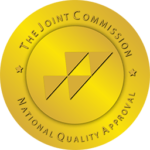Understanding Fentanyl
Fentanyl, a potent synthetic opioid, has become a major concern across the globe due to its high potency and the ease with which it can lead to overdose. The method of smoking fentanyl has become increasingly prevalent, posing significant risks not only to users but also to entire communities. According to the CDC, smoking fentanyl was increasingly linked to overdose deaths in 27 states and D.C. This detailed examination aims to shed light on the dangers associated with smoking fentanyl, providing essential information for prevention and recovery efforts.
What is Fentanyl?
Fentanyl is a synthetic opioid, initially developed for the management of acute and chronic pain, particularly in cancer patients. Its high potency—typically 50 to 100 times greater than morphine—makes it an effective analgesic for severe pain conditions that do not respond well to other opioids. Clinically, fentanyl is used via patches, injections, and lozenges under strict medical supervision due to its potential for addiction and overdose.
Historical Context and Current Use
The development of fentanyl dates back to the 1960s, when it was synthesized for pain management in medical settings. Over the decades, its use expanded within healthcare due to its effectiveness and relatively fast action. However, the past two decades have seen a surge in its illicit use. On the streets, fentanyl is often sold as a powder, dropped onto blotter paper, mixed into illicit pills, or substituted for or added to heroin. This illegal distribution has contributed to a significant increase in overdose cases, making fentanyl a central issue in the opioid epidemic.
How Fentanyl is Consumed
Various Methods of Fentanyl Use
Fentanyl’s medical forms include patches that release the drug slowly into the body, lozenges, and injectable formulations. Illicitly, it is found in several forms, such as spiked on blotter paper for sublingual absorption, mixed with or substituted for heroin, or pressed into pills that mimic the appearance of prescription opioids. Each method has its specific risks but shares the common danger of overdose due to fentanyl’s potency.
Smoking Fentanyl
Smoking fentanyl is particularly hazardous because it involves inhaling vaporized fentanyl, leading to rapid absorption through the lungs directly into the bloodstream. This method delivers a quick, potent high, escalating the risk of overdose due to the difficulty in controlling the dose. The onset of effects is almost immediate, providing little to no time for intervention in the event of an overdose.
The Health Risks of Smoking Fentanyl
Immediate Effects on the Body
The act of smoking fentanyl leads to an almost instantaneous peak in opioid concentration in the brain, causing an extreme depression of the central nervous system. This rapid effect can result in profound respiratory depression, where individuals may experience dangerously slowed or stopped breathing. Other immediate risks include severe sedation, confusion, dizziness, and potentially fatal respiratory arrest.
Long-Term Health Consequences
Long-term fentanyl smokers may suffer from chronic respiratory issues, decreased immune function, and potential organ damage. Respiratory depression can cause hypoxia, a condition where not enough oxygen reaches the brain, leading to long-term neurological and psychological deficits. Additionally, users risk developing tolerance and physical dependence, necessitating higher doses to achieve the same effects and increasing the risk of life-threatening complications.
Psychological Effects
Addiction and Dependency Issues
The potency and method of consumption of fentanyl significantly influence its high addiction potential. Smoking the drug creates a rapid onset of euphoria, a feeling that users often seek to replicate, leading quickly to both psychological and physical dependence. The cycle of addiction can be incredibly hard to break without professional help, given the severe withdrawal symptoms that can set in mere hours after the last dose.
Mental Health Implications
Long-term fentanyl use can lead to significant mental health problems, including but not limited to depression, anxiety, and an increased risk of suicidal thoughts. The drug’s impact on the brain’s reward system can exacerbate existing mental health issues and lead to new ones, creating a dual challenge for treatment.
Comparing Smoking to Other Methods
Inhalation vs. Injection vs. Oral Consumption
Each method of consuming fentanyl presents unique risks; however, smoking it accelerates the drug’s impact due to its rapid absorption through the lungs, leading directly to the brain. This method contrasts sharply with ingestion or a fentanyl patch, where the drug is metabolized more slowly, providing a more prolonged, but less intense, effect. Injection, while also rapid, carries additional risks of vein damage and infection but can be somewhat more controlled in terms of dosage than smoking.
Why Smoking Can Be More Dangerous
The rapid onset of effects from smoking makes it difficult for users to gauge how much fentanyl they are consuming, significantly increasing the risk of accidental overdose. This method bypasses the slower metabolic processes associated with other methods, leading to a faster and often more dangerous high.
Legal and Illegal Fentanyl
Pharmaceutical Fentanyl vs. Street Fentanyl
Pharmaceutical fentanyl is manufactured and distributed legally with stringent regulations. However, street fentanyl, or illicit fentanyl, often produced illicitly, is more likely to be mixed with other dangerous substances, heightening the risk of overdose.
Risks of Unregulated Use
While medical-grade fentanyl is closely regulated, the street versions like fentanyl powder and fentanyl pills present enormous risks. Users often unknowingly consume these forms, which are potent enough to cause fatal overdoses with just a small amount. The transition from fentanyl powder to pills has made it easier for drug dealers to transport and sell this lethal substance, often leading to uncontrolled addiction and increased fentanyl addiction treatment cases.
One lesser-discussed danger of fentanyl, particularly fentanyl smoke, is the fentanyl residue that can linger on surfaces and in the air. This creates a hazardous environment not only for users but for anyone in the vicinity, including law enforcement and first responders. Secondhand fentanyl smoke can inadvertently affect others, a dire consideration that underscores the need for comprehensive overdose prevention and safety protocols in handling such substances.
Treatment Options for Fentanyl Addiction
Detoxification and Rehabilitation
Fentanyl withdrawal is notoriously severe, with symptoms that can incapacitate individuals, pushing them back to use. Effective addiction treatment programs begin with a medically supervised detox process, designed to safely manage withdrawal symptoms, which can be severe and potentially life-threatening. Following detox, individuals often enter long-term rehabilitation programs that can include various forms of therapy such as cognitive-behavioral therapy, group therapy, and family counseling. These programs are designed to address the psychological aspects of addiction and to help individuals build a supportive network and develop coping strategies.
Support Systems and Recovery
Recovery from fentanyl addiction involves ongoing support from professionals, peers, family, and friends. Support groups such as Narcotics Anonymous or tailored therapy sessions provide a community of individuals who understand the challenges of addiction, offering a platform for shared experiences and recovery strategies. Long-term recovery is maintained through continuous engagement with these support systems, along with personal development activities and sometimes medication-assisted treatment to manage cravings and reduce the risk of relapse.
Overcome Fentanyl Addiction at True Self Recovery
The dangers of smoking fentanyl are profound and far-reaching. Understanding these risks and taking proactive steps to prevent misuse is vital. If you or a loved one are struggling with fentanyl addiction or another form of drug abuse, get in touch with True Self Recovery to learn more about our addiction treatment programs.
FAQs
What makes smoking fentanyl more dangerous than other methods of consumption?
Smoking fentanyl is particularly dangerous because it allows the drug to enter the bloodstream and brain very rapidly, which can easily lead to accidental overdoses due to the difficulty in controlling the dosage.
Can you recover from fentanyl addiction?
Yes, recovery from fentanyl addiction is possible with comprehensive treatment, which includes detoxification, behavioral therapy, and ongoing support to maintain sobriety.
What are the first signs of fentanyl overdose?
The first signs of fentanyl overdose include severe confusion, slow breathing, blue-colored lips, unresponsiveness, and even coma. Immediate medical intervention is critical.
Are there specific treatments for those addicted to smoking fentanyl?
Treatment for fentanyl addiction generally involves medically supervised detoxification followed by a combination of behavioral therapies, counseling, and support groups, tailored to address the specific needs of the individual.
Why is fentanyl residue so dangerous?
Fentanyl resin, the residue left after smoking the drug, poses significant dangers due to its continued potency and the risk of unintended exposure. This resin contains concentrated amounts of fentanyl, which remains highly active even in trace amounts. Here are several reasons why fentanyl resin is particularly hazardous:
High Potency: Fentanyl is an extremely potent opioid, and the resin retains this potency. Even small amounts can cause severe effects, such as respiratory depression, unconsciousness, or overdose, particularly in individuals without tolerance to opioids.
Accidental Exposure: The resin can easily be transferred from surfaces to hands or other parts of the body. Unintentional contact, especially by children or pets, can lead to absorption through the skin or ingestion, posing severe health risks.
Invisible Threat: Fentanyl resin is not always visible to the naked eye, making it difficult to detect and clean up. This invisibility increases the risk of accidental exposure for anyone who comes into contact with surfaces where fentanyl was used.



